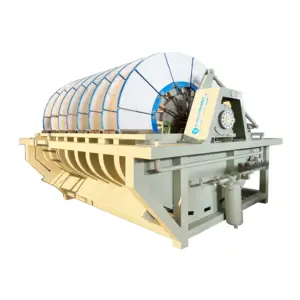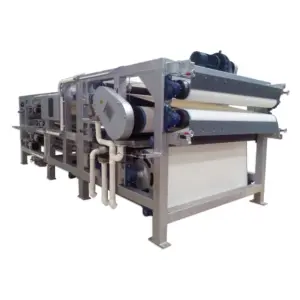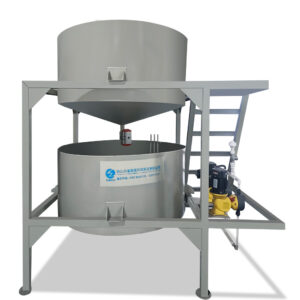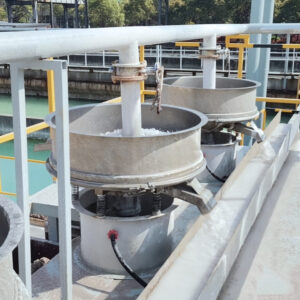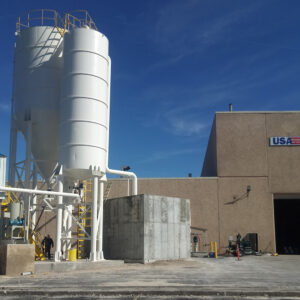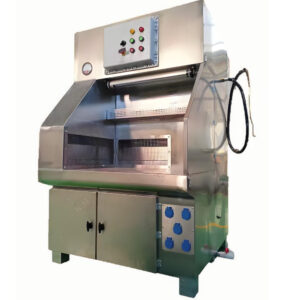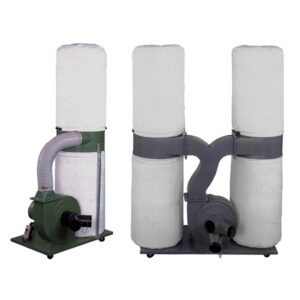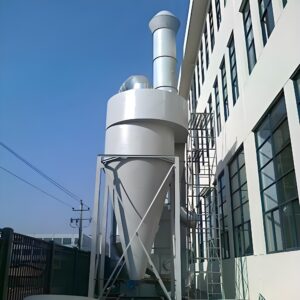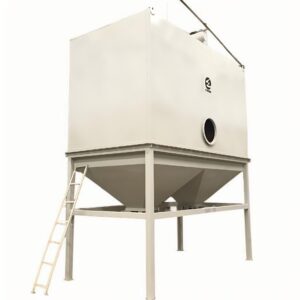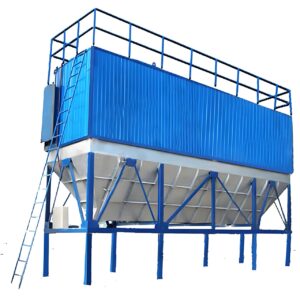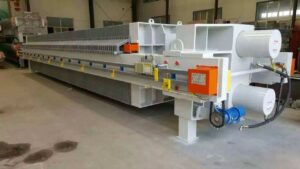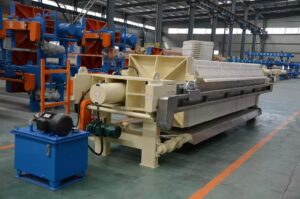Downdraft tables are essential tools in many industrial settings, helping to maintain clean and safe work environments by effectively capturing dust, fumes, and other airborne particles. One crucial aspect of these tables that often goes overlooked is the ducting system. The right ducting options can significantly enhance the performance of downdraft tables, while the wrong choices can lead to inefficiencies and potential safety hazards.
In this article, we'll explore the various ducting options available for downdraft tables, examining their pros and cons to help you make an informed decision for your specific needs. We'll delve into factors such as material choices, size considerations, and installation methods, all of which play a crucial role in the overall effectiveness of your dust collection system.
As we navigate through the intricacies of downdraft table ducting options, we'll address key questions and provide insights based on industry expertise and current best practices. Whether you're setting up a new system or looking to optimize an existing one, this comprehensive guide will equip you with the knowledge to make the best choices for your downdraft table ducting.
Proper ducting is the lifeline of an efficient downdraft table system, ensuring optimal air flow and particle capture while minimizing energy consumption and maintenance requirements.
What Materials Are Best for Downdraft Table Ducting?
When it comes to selecting the right material for your downdraft table ducting, several factors come into play. The choice of material can significantly impact the system's performance, durability, and overall cost-effectiveness.
The most common materials used for downdraft table ducting include galvanized steel, stainless steel, and PVC. Each of these materials has its own set of advantages and drawbacks, making them suitable for different applications and environments.
Galvanized steel is a popular choice due to its strength, durability, and resistance to corrosion. It's particularly well-suited for general woodworking and metalworking applications where the particles being collected are not highly corrosive. Stainless steel, on the other hand, offers superior corrosion resistance, making it ideal for environments where chemicals or highly corrosive materials are present. PVC ducting is lightweight and cost-effective, but its use is typically limited to applications with lower air velocities and temperatures.
The choice of ducting material can make or break the efficiency of your downdraft table system. Galvanized steel offers a balance of durability and cost-effectiveness, while stainless steel provides unparalleled corrosion resistance for demanding environments.
| Material | Corrosion Resistance | Cost | Weight | Heat Resistance |
|---|---|---|---|---|
| Galvanized Steel | Good | Moderate | Heavy | High |
| Stainless Steel | Excellent | High | Heavy | Very High |
| PVC | Excellent | Low | Light | Low |
When selecting the material for your downdraft table ducting, consider the nature of the particles being collected, the environmental conditions, and your budget. A well-chosen material will ensure longevity and optimal performance of your dust collection system.
How Does Duct Size Affect Downdraft Table Performance?
The size of the ducting used in a downdraft table system plays a crucial role in its overall performance. Proper sizing ensures efficient air flow, effective particle capture, and optimal energy consumption.
Duct size directly impacts the air velocity within the system. If the ducts are too small, it can lead to increased air resistance, reduced air flow, and potentially inadequate particle capture. On the other hand, oversized ducts can result in reduced air velocity, allowing heavier particles to settle in the ductwork and potentially causing blockages.
To determine the appropriate duct size, factors such as the required air flow rate, the type and size of particles being collected, and the layout of the system must be considered. Professional designers often use calculations based on the static pressure drop and air velocity to determine the optimal duct size for a given system.
Proper duct sizing is not just about meeting minimum requirements; it's about optimizing the entire system for peak performance. A well-designed duct system can significantly enhance the efficiency of your downdraft table, improving particle capture while minimizing energy consumption.
| Duct Diameter (inches) | Recommended Air Flow (CFM) | Maximum Air Velocity (FPM) |
|---|---|---|
| 4 | 300-400 | 4000 |
| 6 | 600-800 | 4000 |
| 8 | 1000-1400 | 4000 |
| 10 | 1600-2200 | 4000 |
It's important to note that these are general guidelines, and the specific requirements for your system may vary based on your unique application and environmental factors. Consulting with a professional or using specialized design software can help ensure that your duct sizing is optimized for your specific needs.
What Are the Benefits of Flexible vs. Rigid Ducting?
The choice between flexible and rigid ducting is an important consideration when designing a downdraft table system. Each type has its own set of advantages and limitations, making them suitable for different scenarios.
Flexible ducting, typically made from materials like reinforced PVC or aluminum, offers the advantage of easy installation and adaptability to complex layouts. It's particularly useful in situations where the ducting needs to navigate around obstacles or in tight spaces. However, flexible ducting generally has a higher air resistance due to its corrugated interior surface, which can reduce overall system efficiency.
Rigid ducting, usually made from materials like galvanized steel or stainless steel, provides smoother air flow and lower air resistance. This results in better overall system efficiency and can help reduce energy consumption. Rigid ducting is also more durable and easier to clean, making it a preferred choice for long-term installations.
While flexible ducting offers ease of installation and adaptability, rigid ducting provides superior air flow characteristics and long-term durability. The choice between the two often comes down to balancing installation convenience with long-term performance and maintenance considerations.
| Feature | Flexible Ducting | Rigid Ducting |
|---|---|---|
| Installation Ease | High | Moderate |
| Air Flow Efficiency | Moderate | High |
| Durability | Moderate | High |
| Cleaning Ease | Moderate | High |
| Cost | Low to Moderate | Moderate to High |
In many cases, a combination of both flexible and rigid ducting can provide the best of both worlds. For example, rigid ducting might be used for the main runs, with flexible ducting employed for final connections to equipment or in areas with space constraints.
How Can Proper Ducting Installation Maximize Downdraft Table Efficiency?
The installation process of ducting for downdraft tables is a critical factor that can significantly impact the system's overall efficiency. Proper installation ensures optimal air flow, minimizes pressure drops, and reduces the risk of leaks or blockages.
One of the key considerations during installation is minimizing the number of bends and turns in the ductwork. Each bend introduces additional resistance to air flow, potentially reducing the system's efficiency. When bends are necessary, using long-radius elbows instead of sharp turns can help maintain smoother air flow.
Another important aspect is ensuring proper support for the ducting. Adequate support prevents sagging, which can create low spots where particles may accumulate. It also helps maintain the integrity of joints and connections, reducing the risk of leaks.
Proper ducting installation is not just about connecting points A to B; it's about creating a system that maximizes air flow efficiency while minimizing potential points of failure. Attention to detail during installation can lead to significant improvements in system performance and longevity.
| Installation Factor | Impact on Efficiency |
|---|---|
| Minimizing Bends | High |
| Using Long-Radius Elbows | Moderate to High |
| Proper Support | Moderate |
| Sealed Joints | High |
| Smooth Transitions | Moderate to High |
Professional installation or consultation can be invaluable in ensuring that your ducting is installed correctly. They can provide insights into best practices and help identify potential issues before they become problems. PORVOO, a leading provider of industrial air quality solutions, offers expert guidance on downdraft table ducting installation to maximize system efficiency.
What Role Do Dampers Play in Downdraft Table Ducting Systems?
Dampers are crucial components in downdraft table ducting systems, playing a vital role in controlling air flow and optimizing system performance. These adjustable plates or valves can be used to balance air flow across different branches of the system, adjust the overall air flow rate, or isolate certain sections for maintenance.
There are several types of dampers commonly used in downdraft table ducting systems. Butterfly dampers consist of a circular plate that rotates on a central axis, allowing for precise control of air flow. Blast gates, on the other hand, are simpler devices that can be fully opened or closed, making them ideal for isolating branches of the system.
The strategic placement and proper adjustment of dampers can significantly enhance the efficiency of your downdraft table system. They allow for fine-tuning of air flow to different areas, ensuring that each part of the system receives the appropriate amount of suction.
Dampers are the fine-tuning instruments of a downdraft table ducting system. When properly employed, they can dramatically improve system balance, enhance overall efficiency, and provide valuable flexibility in system operation and maintenance.
| Damper Type | Air Flow Control | Ease of Use | Typical Application |
|---|---|---|---|
| Butterfly | Precise | Moderate | Main ducts, balancing |
| Blast Gate | On/Off | High | Branch isolation |
| Slide Gate | Variable | High | Volume control |
When designing your downdraft table ducting system, consider incorporating dampers at key points to allow for future adjustments and optimizations. This can provide valuable flexibility as your needs change or as you fine-tune your system for optimal performance.
How Does Ducting Affect Noise Levels in Downdraft Table Systems?
Noise reduction is an important consideration in any industrial setting, and downdraft table systems are no exception. The ducting configuration can have a significant impact on the overall noise levels produced by the system.
One of the primary sources of noise in ducting systems is turbulence caused by air flow. Sharp bends, sudden changes in duct size, and rough interior surfaces can all contribute to increased turbulence and, consequently, higher noise levels. Smooth, gradual transitions and properly sized ducts can help minimize this turbulence and reduce noise.
Another factor to consider is the material of the ducting itself. Some materials, like certain plastics, may have better sound-dampening properties than metals. However, this needs to be balanced with other considerations such as durability and fire resistance.
While the primary function of ducting is to efficiently move air and particles, its impact on noise levels should not be overlooked. A well-designed ducting system can contribute significantly to a quieter work environment, enhancing worker comfort and productivity.
| Noise Reduction Method | Effectiveness | Cost |
|---|---|---|
| Smooth Transitions | High | Low to Moderate |
| Sound-Dampening Materials | Moderate to High | Moderate to High |
| Proper Duct Sizing | High | Low |
| Vibration Isolation | Moderate | Low to Moderate |
In some cases, additional noise reduction measures such as sound-absorbing wraps or dedicated silencers may be necessary. These can be particularly useful in areas where the ducting passes through spaces where noise levels are a concern.
What Maintenance Considerations Are Important for Downdraft Table Ducting?
Regular maintenance of downdraft table ducting is crucial for ensuring long-term performance and efficiency. Proper maintenance can prevent issues such as reduced air flow, increased energy consumption, and potential system failures.
One of the primary maintenance tasks is regular inspection of the ducting system. This involves checking for any visible damage, leaks, or signs of wear. Pay particular attention to joints and connections, as these are common points where issues can develop.
Cleaning is another critical aspect of ducting maintenance. Over time, particles can accumulate in the ductwork, particularly in areas with low air velocity or sharp bends. Regular cleaning helps maintain optimal air flow and prevents the build-up of potentially combustible materials.
Maintenance is not just about fixing problems; it's about proactive care that ensures your downdraft table ducting system operates at peak efficiency throughout its lifespan. A well-maintained system not only performs better but also lasts longer, providing a better return on your investment.
| Maintenance Task | Frequency | Importance |
|---|---|---|
| Visual Inspection | Monthly | High |
| Leak Check | Quarterly | High |
| Cleaning | Annually or as needed | High |
| Damper Adjustment | Semi-annually | Moderate |
| Filter Replacement | As per manufacturer recommendations | High |
It's also important to keep accurate records of maintenance activities and any issues encountered. This can help identify patterns and predict potential problems before they become serious. Consider implementing a regular maintenance schedule and potentially investing in professional maintenance services to ensure your system remains in top condition.
For those looking to optimize their Downdraft table ducting options, professional maintenance services can provide expert care and ensure your system continues to operate at peak efficiency.
Conclusion
Downdraft table ducting is a critical component in ensuring the effectiveness and efficiency of your dust collection system. From material selection to installation techniques, each aspect plays a crucial role in the overall performance of the system.
By carefully considering factors such as duct size, material choice, and damper placement, you can optimize your downdraft table for maximum efficiency and longevity. Regular maintenance and attention to noise reduction can further enhance the system's performance and contribute to a better working environment.
Remember, the right ducting solution will depend on your specific needs and operating conditions. Whether you're setting up a new system or looking to improve an existing one, taking the time to understand and implement best practices in downdraft table ducting can lead to significant improvements in air quality, energy efficiency, and overall workplace safety.
As industrial processes continue to evolve, so too will the technologies and best practices associated with downdraft table ducting. Staying informed about the latest developments and consulting with experts in the field can help ensure that your dust collection system remains effective and compliant with current standards and regulations.
Ultimately, investing in proper ducting for your downdraft table is an investment in the health and safety of your workforce, the efficiency of your operations, and the longevity of your equipment. By making informed decisions and prioritizing ongoing maintenance, you can create a dust collection system that serves your needs effectively for years to come.
External Resources
Downdraft Tables – Sanding & Grinding | Dust Collection … – DualDraw – This resource provides details on various downdraft table designs, including the "FT" Series Flat Top Downdraft Tables and the "LB" Series Desktop Downdraft Tables. It highlights features such as 360-degree access, non-spark work surfaces, and compliance with NFPA standards for safe dust collection.
DT-35 — Airflow Systems – This page describes the Airflow Systems downdraft table, which combines the work surface with the particulate collection area. It features a 14-inch duct connection for remote collection, durable steel construction, and built-in forklift slots for easy movement.
Defender Ducted Downdraft Tables | Clean Air Industries – This resource details the Defender Series of Industrial Downdraft Tables, designed for connectivity with central dust collection systems. It highlights modular designs, various configuration options, and customizable features such as HEPA afterfilters and protective matting.
Portable Downdraft Table | Sentry Air Systems – This page explains the use of portable downdraft tables as mobile source-capture engineering controls. It discusses how these tables protect operators from respirable particulate and fumes generated from various industrial applications and highlights their mobility and versatility.
Downdraft Tables for Industrial Dust Collection – Kemper America – This resource provides information on downdraft tables designed for industrial dust collection, emphasizing their role in protecting worker health and safety. It covers different models and configurations suitable for various industrial applications.
Downdraft Workstations – RoboVent – This page details RoboVent's downdraft workstations, which are designed to capture dust and fumes at the source. It highlights the importance of these workstations in maintaining a clean and safe working environment and discusses various customization options.
